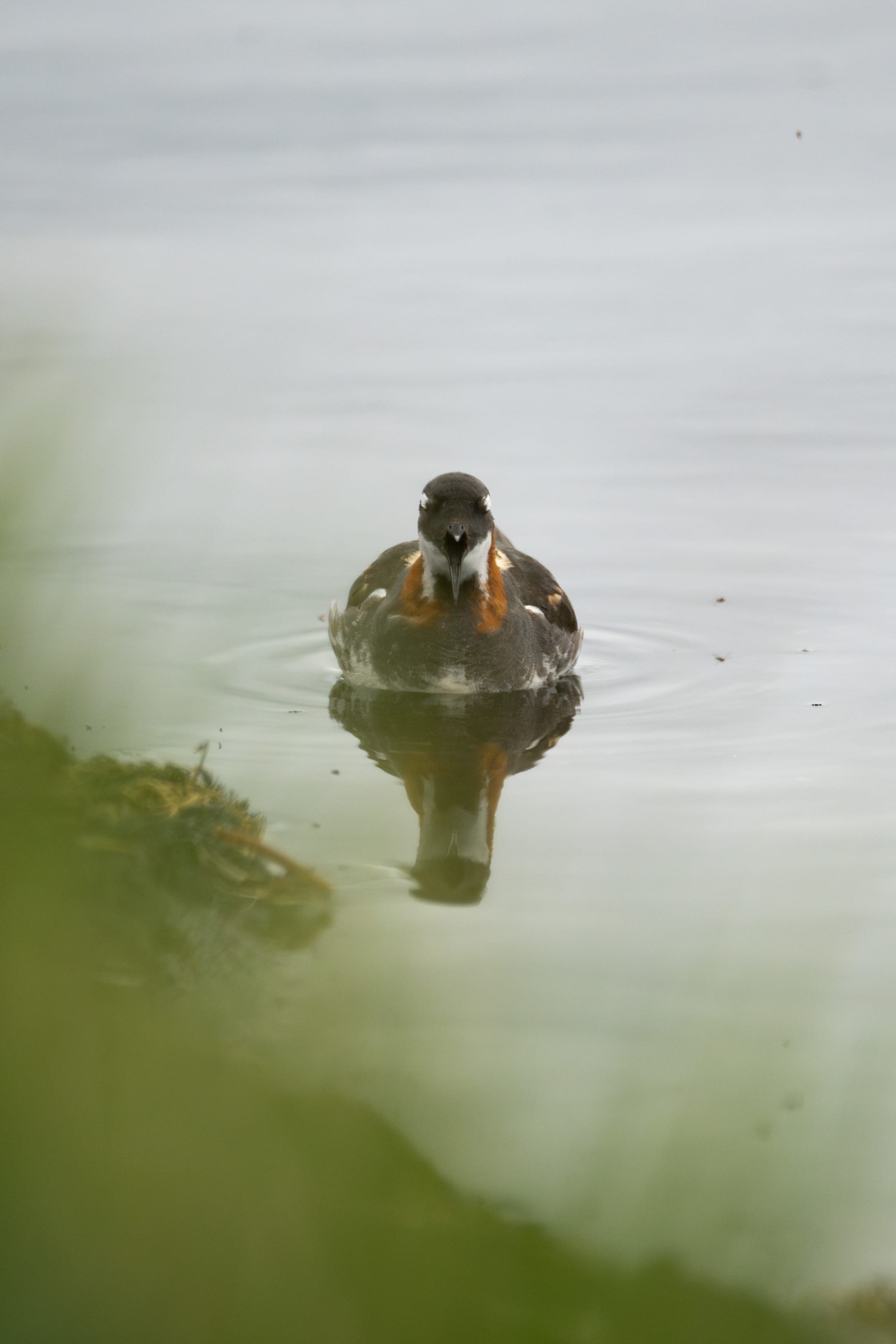Plumage and gender roles of the red-necked phalaropes
5. February 2025
Earlier I issued a small bird quiz on Mastodon and my Instagram stories: a red-necked phalarope couple, along with a poll to guess which one was the male and which one the female.
The majority of respondents assumed the slightly larger and more brightly colored individual was the male, which makes sense given the fact that male birds are typically those with the more extravagant plumage.
But it was a trick question, it's actually the exact opposite with the red-necked phalaropes!
Species
The red-necked phalarope couple.

This picture of two red-necked phalaropes was taken in June 2023 in the north of Iceland by lake Mývatn, where a lot of these small waders can be found.
The individual on the left is the female. The orange band on her neck is brighter and more defined than that one of the male, which is the bird on the right. His feathers are a bit duller, and the feathers on his back are a bit more brown than the female's as well.
Reversed gender roles.
We may think of male birds as those that fight over the females, and the females as the ones that incubate the eggs, but several waders tend to do things a bit differently.
For example, purple sandpipers are monogamous and share the egg incubation duties, but as soon the chicks hatch, the females leave the nesting areas and their partners raise the chicks.
And another example of waders having "non-traditional" gender roles are these red-necked phalaropes.
Female red-necked phalarope in Kiberg (Vardø), June 2024.
The girl red-necked phalaropes are the ones chasing down the boys and fighting other girls over them. As soon as the eggs are laid, the girls leave the guys, leaving the guys to incubate the eggs and rear the young. After leaving their partner with the eggs, the female phalaropes may even find a new guy to restart the process with, laing several clutches of eggs a season, each with a different dad.
Behavior and plumage.
Given their breeding behavior, makes sense that their plumage is opposite from the traditional as well.
The male red-necked phalaropes spend more time stationary on the nest, so it's beneficial to have less saturated and browner colors, providing them with better camouflage.
At the same time, the brighter colors may benefit the females when it comes to competing over and seducing males.



